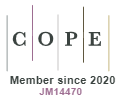A revision of the dyspnea measuring method literature
DOI:
https://doi.org/10.5585/conssaude.v1i0.166Keywords:
Fisioterapia, dispnéia, falta de ar, escalas, métodos de mensuração.Abstract
Dyspnea is not only the difficulty that one, who suffers from either lung, heart, metabolic or psychogenic disorders, has to breathe, but also uncomfortable breath. This kind of symptom is extremely embarrassing to the patients, since it leads them to the reduction of their functional activities.As each patient reacts to the dyspnea's symptoms differently from the others, and the physician cannot feel exactly what his/her patient feels, dyspnea becomes a subjective symptom so that it is hard to be accurately measured.The aim of this paper is to explain the methods that are mostly used by physicians in order to measure it. For this reason some current dyspnea measuring methods were put together and studied. Thirty-one articles about the subject were analyzed and eight methods were joined. The results of the study led to the conclusion that Borg’s modified scale is the most used one, followed by (in order of importance) the Visual Analogic scale, Medical Research Council scale, and Base Index of dyspnea.Downloads
Downloads
Published
2008-01-02
How to Cite
1.
Velloso M, Costa CP, Ozeki CM. A revision of the dyspnea measuring method literature. Cons. Saúde [Internet]. 2008 Jan. 2 [cited 2025 May 22];1:35-9. Available from: https://periodicos.uninove.br/saude/article/view/166
Issue
Section
Artigos
License
Copyright (c) 2002 ConScientiae Saúde

This work is licensed under a Creative Commons Attribution-NonCommercial-ShareAlike 4.0 International License.
Views
- Abstract 993
- PDF (Português (Brasil)) 2809







